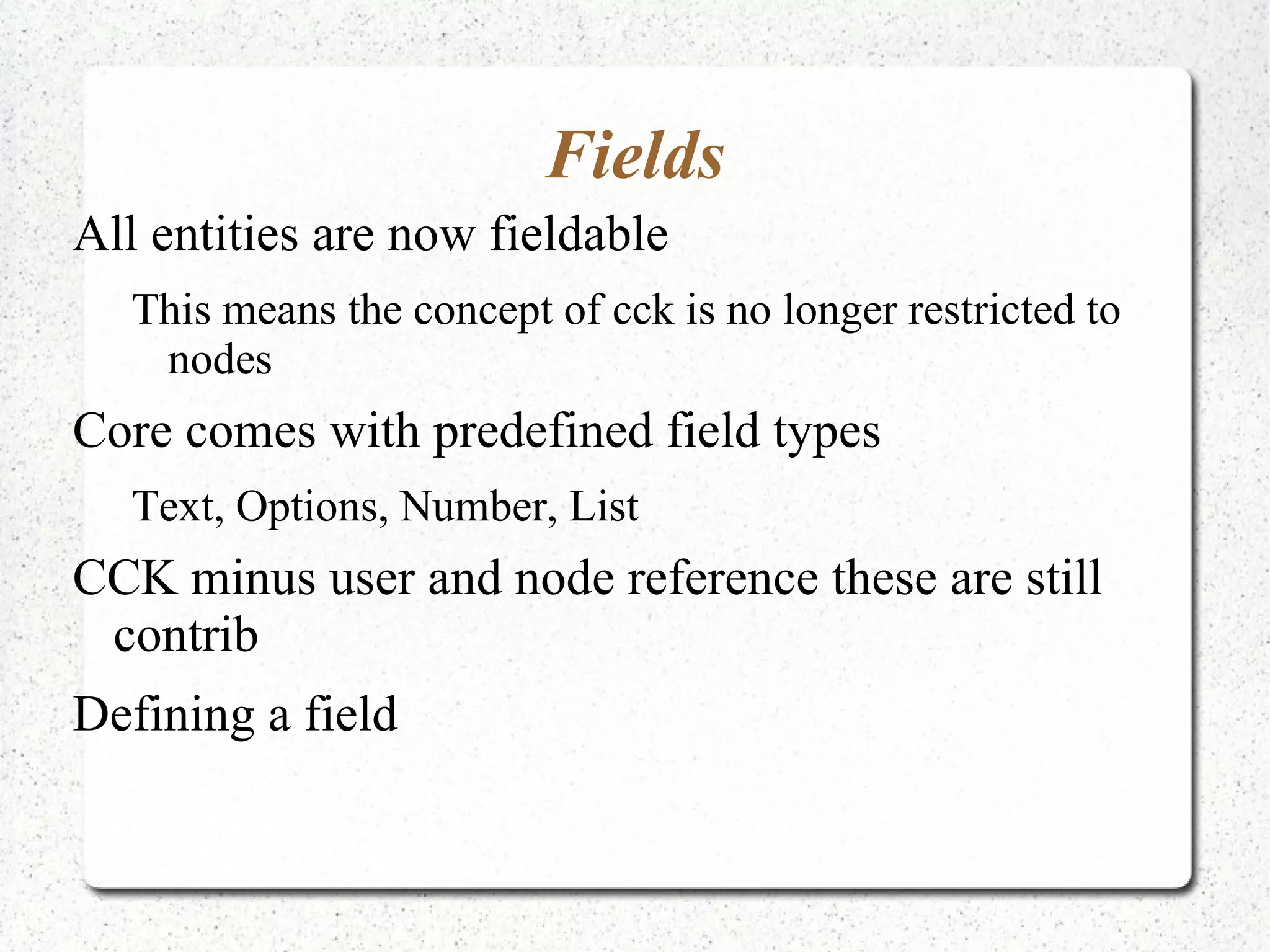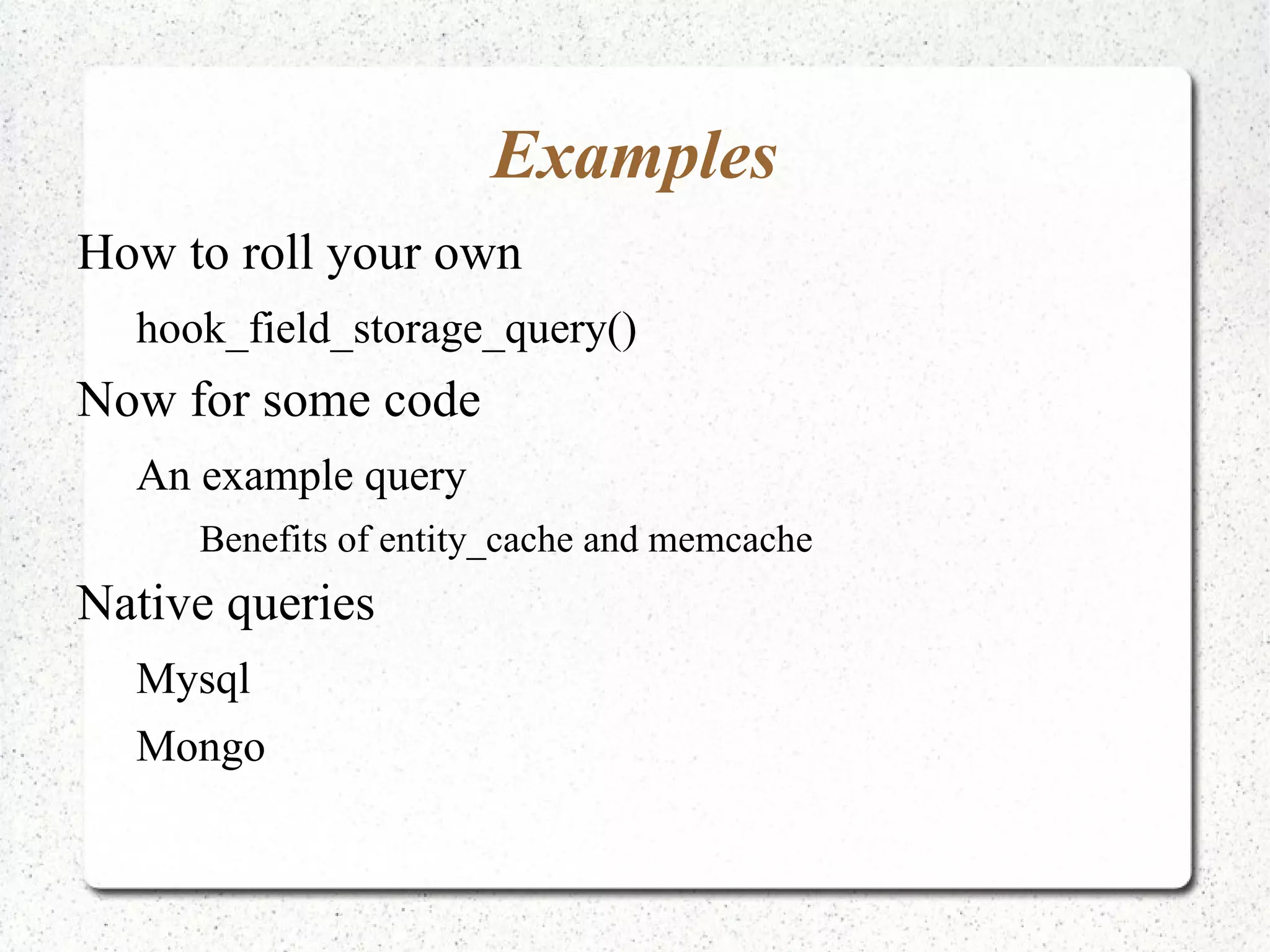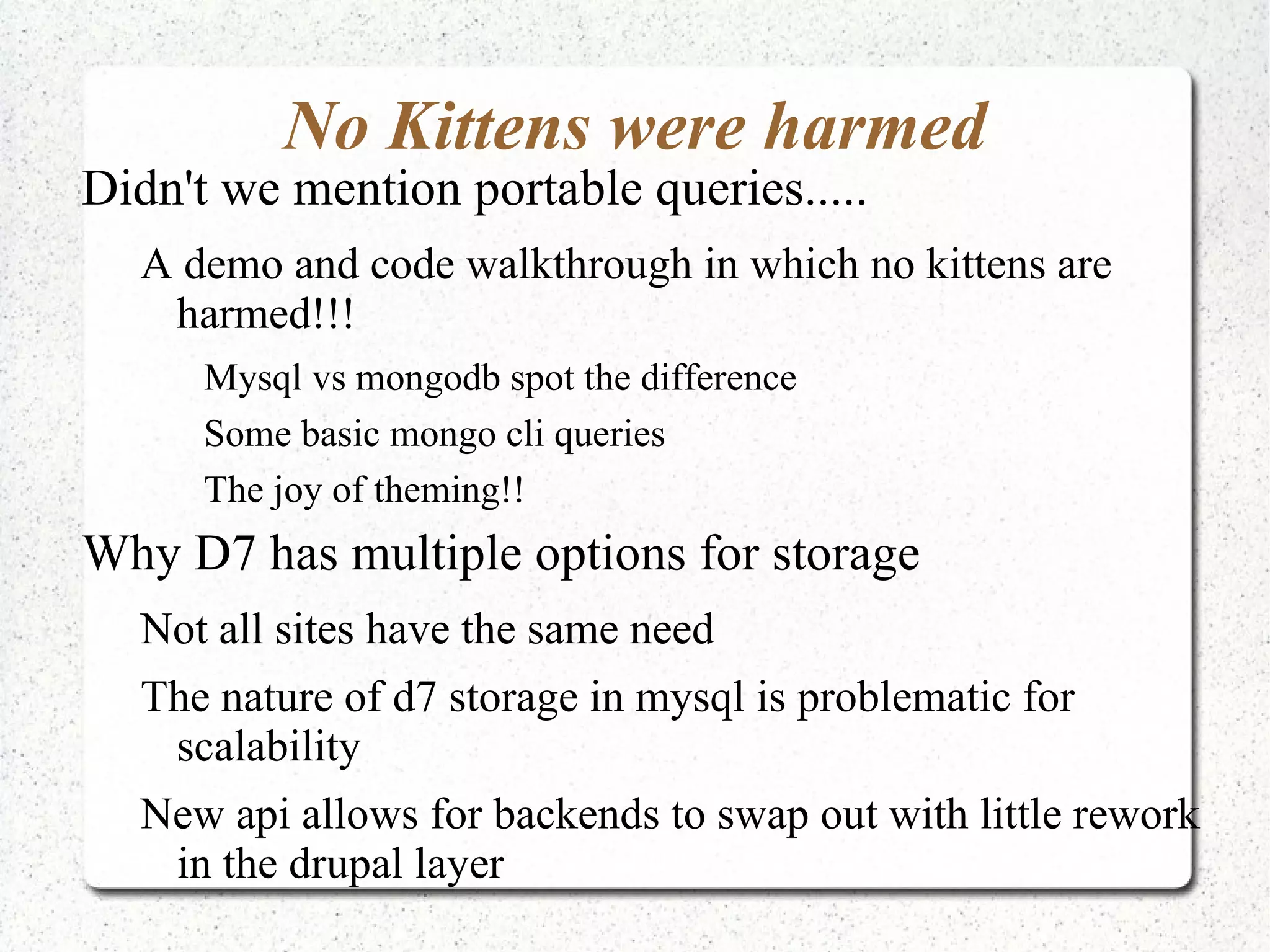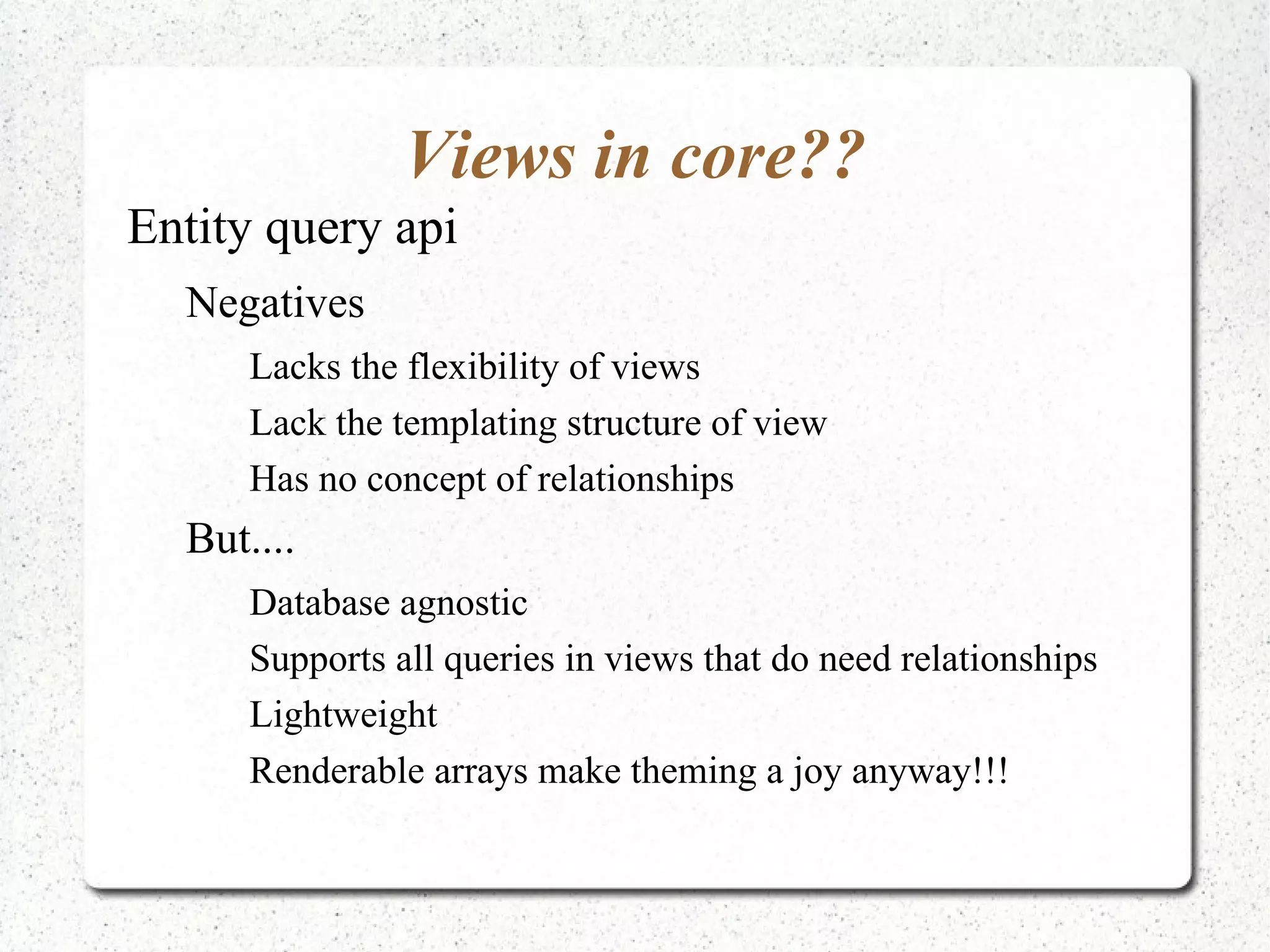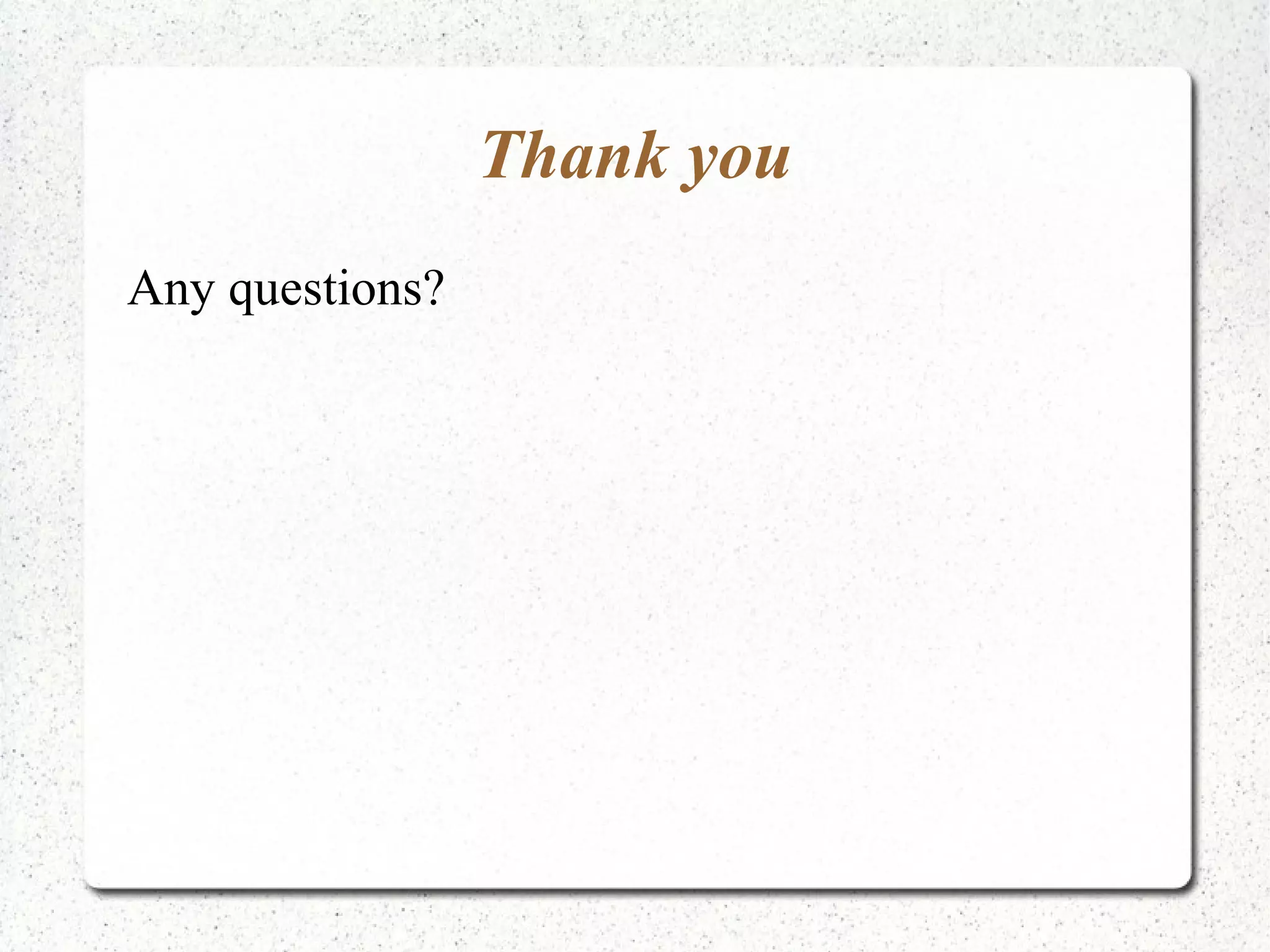Drupal 7 introduces the entity field and query APIs which allow content to be stored and queried in a flexible way across different database backends like MySQL and MongoDB. This makes it possible to write database agnostic queries and supports fields as first class objects that can be attached to entities like nodes. The new APIs provide a standard way to work with content that improves scalability and allows sites to choose the optimal database storage for their needs.





